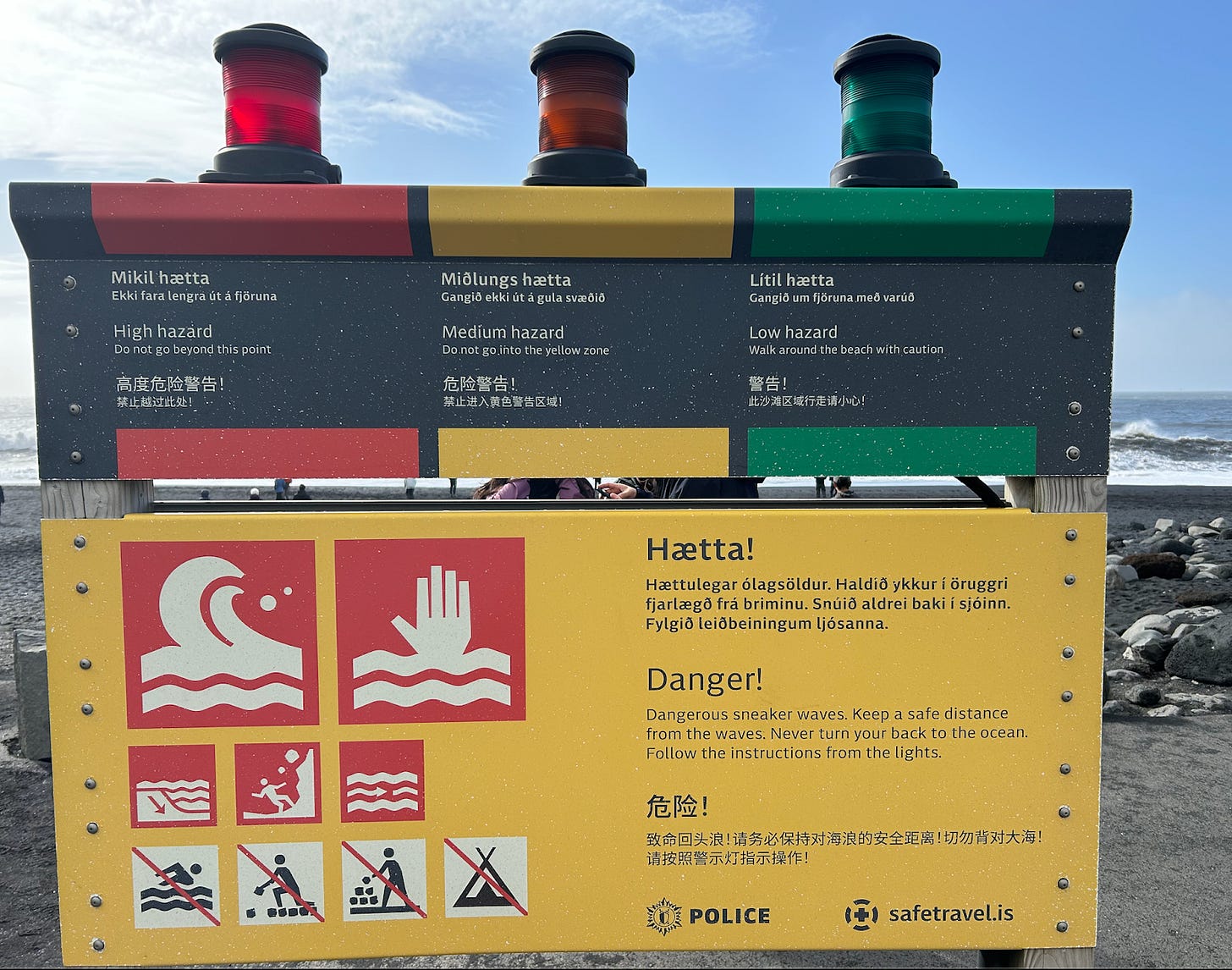What I Learned in Iceland About Measuring Progress
On a recent vacation to Iceland, we visited a popular beach on the south coast of Iceland that’s so dangerous they’ve installed a traffic-light system to measure risk. Green doesn’t mean “safe.” Yellow doesn’t mean “fine.” Red doesn’t even mean “you’re doomed.” Each color simply signals a condition, a level of awareness, and the need for a particular action.
I stood in front of this sign and thought about dashboards in organizations. Too often, we treat dashboards as verdicts. Green means success. Yellow means trouble. Red means failure. But what if dashboards were less about judgment and more about guidance? What if, like the Icelandic shoreline, our dashboards were less about declaring “safe” or “unsafe” and more about saying: Pay attention here. Act accordingly. Stay alert.
Standing on that black sand beach, with waves thundering and a red beacon flashing, I realized something simple but profound: measuring progress is not about safety or certainty. It’s about awareness. It’s about creating dashboards that don’t congratulate or condemn, but that help us act wisely in uncertain waters.
Red: Stop, Rethink, Protect
When the beacon flashes red, the sign doesn’t say “you’ve failed.” It says: Do not go beyond this point. That’s a dashboard metric in its purest form. It’s not moralizing. It’s situational. If our organizational dashboard is red on teacher retention, or red on budget burn rate, the right mindset is not shame or panic—it’s boundaries. Stop. Contain. Protect. Don’t push further into unsafe territory.
Yellow: Watch Closely, Adjust
The yellow beacon says: Don’t go into the zone. That’s not a catastrophe; it’s an alert. When dashboards flash yellow, they are calling us to heightened awareness. Maybe our attendance numbers are wobbling. Maybe our client response times are lagging. Yellow means: pay attention before it becomes red. Like walking along the surf, it’s not fatal—but it requires vigilance and adjustment.
Green: Stay Aware, Not Complacent
Here’s the part that surprised me most. Green does not mean safe. The sign literally says: Walk around the beach with caution. Even in “good” conditions, sneaker waves can still sweep you away. Isn’t that the truth about progress? A green indicator on a dashboard doesn’t mean we can relax. It means conditions are favorable, but they still require us to stay awake, to keep learning, to hold onto practices that made it green in the first place.
Dashboards as Prompts for Action
The brilliance of the Icelandic system is that it never lets you forget: you are in a dynamic environment. The ocean is bigger than you, stronger than you, and always changing. The point of the dashboard is not to declare victory but to give you a posture. Walk carefully. Stop when necessary. Adjust when conditions change.
In organizations, we often misread dashboards as scoreboards. We see green as a win, yellow as a warning, red as a loss. But a better way is to see dashboards as navigational tools, helping us walk through shifting conditions. They are prompts, not verdicts. They tell us how to move, not how to feel about ourselves.


